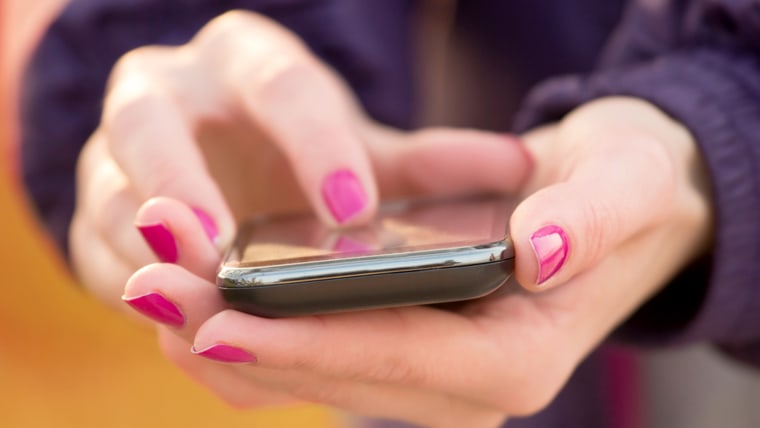All your texting and Snapchatting may be giving your thumb a workout — but it isn’t doing wonders for your handshake.
The hand grip strength of millennials is lower than that of adults in 1985, when grip and pinch norms were established, a recent study found.

It’s not a surprise given how millennials live and work, said lead author Elizabeth Fain, assistant professor of occupational therapy at Winston-Salem State University.
“They’re not using their hands as much as they were when they had to work in agricultural or manufacturing jobs, or had more physical chores,” Fain told TODAY.
“Now, a lot of jobs are in technology, using technology a lot throughout the day, and most millennials are using smartphones.”
Related: Is your smartphone a pain? How to prevent it from causing your hands to suffer
A person’s hand grip strength is a good indicator for overall health, Fain noted. It correlates with general fitness and is a good way to measure progress if you’ve had a hand injury.
When Fain was in clinical practice, she regularly measured patients’ grip strength and noticed a clear trend: Most people’s grips were below the norm set 30 years ago.
For the study, published in the Journal of Hand Therapy, she and her co-author recruited 237 university students 20 to 34 years old in North Carolina. Just like in the 1980s, their grip strength was measured with a dynamometer, an instrument with a handle that a person squeezes as hard as he or she can.
Little changes can bring big results. Sign up for our One Small Thing newsletter here
The results confirmed millennials just aren’t as strong as their counterparts 30 years ago. Men 25 to 29 years old could squeeze with 120 pounds of force with their right hand in 1985, but that number fell to less than 95 pounds in recent years.
For women 20 to 24 years old, the average right grip strength was lower by more than 11 pounds.
In the end, the scores were lower in all millennial grip strengths, except women 30 to 34 years old.
Related: Texting neck: How hunching over your smartphone stresses your spine
Pinch strength, however, did not change much. Fain believes that’s because texting may be making people’s thumbs stronger. It's also straining thumbs more than ever.
“Because of a lot of this texting, the millennials are getting some inflammation in the thumb muscles that’s similar to what happens in carpal tunnel with over-usage. We’re going to need to monitor that closely,” Fain said.
“Those muscles are so small — they were not designed to work that long, kind of like a marathon.”
Grip strength is important for the stability of all the hand joints, Fain noted. You want a good balance between the muscles that bend the fingers and the muscles that straighten them. Otherwise, you’re more prone to injury.
To practice and improve your grip strength:
- Squeeze tennis or Nerf balls of different resistance with your hands, Fain suggested. That's the easiest exercise to do and most people have access to them at home.
- Hand grippers work well, too. You can find them in sporting goods stores.
- Squeezing clothes pins is another low-tech way to boost your hand strength.
And yes, you’ll likely find a much weaker handshake if you greet a person now than in the 1980s, Fain noted.
That may impact a person's employment chances. One study found job seekers with “weak and wimpy” handshakes scored lower with interviewers.